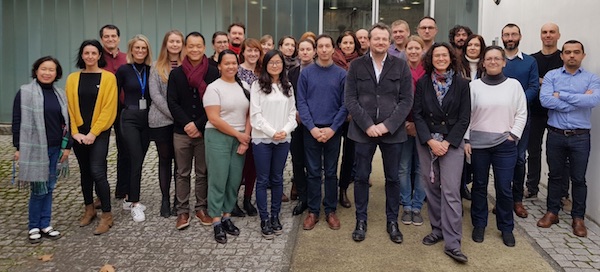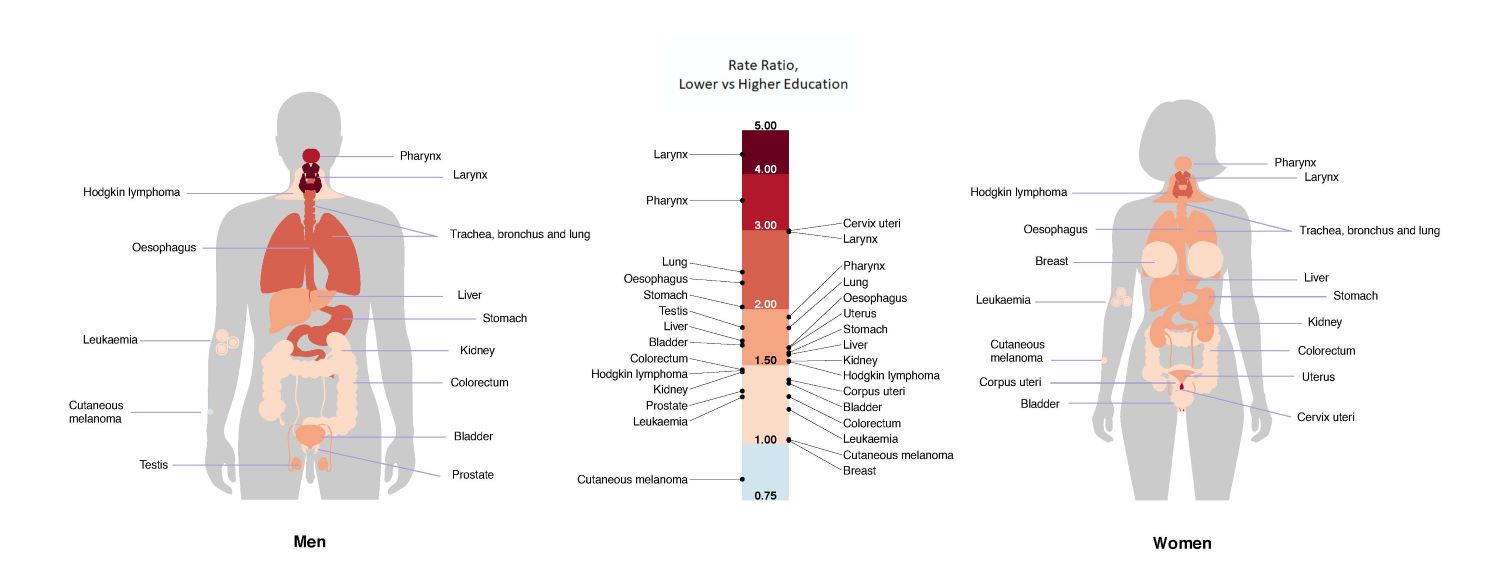About
Aligning with IARC’s mandate from WHO, the Cancer Surveillance Branch (CSU):
- provides quality-assured data and statistics to all, as global public goods, via the Global Cancer Observatory, among other platforms;
- works in close partnership with population-based cancer registries (PBCRs) worldwide in developing tools and standards, and seeks to measurably improve registry coverage, quality, and networking capacity in countries in transition; and
- conducts international research that illustrates the transitional nature of cancer profiles in person, place, and time and has a major focus on the health, social, and economic benefits of effective cancer prevention interventions.
The development and dissemination of global indicators of the cancer burden worldwide, via CSU’s research studies and on the Global Cancer Observatory, is only made possible through the work of PBCRs and their support and collaboration; this illustrates the cyclical and complementary nature of the Branch’s activities.
CSU builds on its long-standing expertise and track record in cancer registration and descriptive epidemiology, ensuring that its work aligns with the evolving global cancer agenda. The key priorities align with IARC’s mission and vision:
- To serve as a reference to the global cancer community in the provision of national cancer indicators;
- To ensure that locally recorded high-quality cancer data from PBCRs are available to inform priorities for national cancer control;
- To describe and interpret the changing magnitude and the transitional nature of cancer risk profiles around the world;
- To advocate the health, social, and economic benefits of preventive interventions, through a systematic quantification of their future impact; and
- To better understand societal inequalities and economic costs of cancer, to enable equitable and sustainable health systems that are capable of effectively reducing the burden of and suffering from the disease at all ages.
CSU informs global, regional, and national priorities for cancer control action via dedicated programmes of work in six complementary areas.

Cancer registry support and development
CSU provides the Secretariat for the International Association of Cancer Registries (IACR), the professional society dedicated to fostering the aims and activities of cancer registries worldwide. This direct link to registries remains vital to CSU’s remit of expanding the availability of quality-assured cancer data. The joint IARC–IACR Cancer Incidence in Five Continents series is a flagship publication that compiles comparable cancer incidence rates across diverse registry populations worldwide. The IACR supports the exchange of information among registries through annual scientific meetings, the development of registry standards (including the International Classification of Diseases, 4th Edition [ICD-O-4] following the completion of the 5th edition of the WHO Classification of Tumours series), and the provision of registry tools (including the CanReg5 operating software for registries, with modules for data entry, quality control, consistency checks, and basic analysis of the data). The IACR annual conference was held in Beijing, China, in 2024 and will take place in Izmir, Türkiye, in 2025.
The Global Initiative for Cancer Registry Development (GICR) aims to markedly increase the coverage, quality, and use of data from PBCRs in low- and middle-income countries. Coordinated by IARC, the GICR brings together major international and national agencies committed to working collaboratively to improve cancer surveillance worldwide. Six IARC Regional Hubs serve as regional coordinating bodies for GICR activities and as the main point of contact for countries within Latin America and the Caribbean, Africa, Asia, and Oceania. GICR Centres of Expertise have been established in 13 countries to further strengthen capacity in cancer registration by delivering specific functions in identified geographical areas in one or more Hubs. The GICRNet uses a Train the Trainer model to form a network of experts, whereby standardized teaching materials for cancer registries are developed jointly between IARC and future trainers across the Hub regions.
Global cancer indicators
CSU compiles, estimates, and reports cancer statistics through its flagship projects and databases and through high-impact peer-reviewed publications. The Global Cancer Observatory is an interactive web-based platform that presents global cancer indicators of direct relevance to cancer research and policy, developed via CSU’s descriptive research programme. See also the links to CSU websites.
Descriptive epidemiology of cancer
CSU has several major lines of research based on the databases held within CSU, including in-depth assessments of the international variations for specific cancer types, quantification of the major risk factors contributing to the current cancer burden worldwide, and a global assessment of the long-term benefits of preventive interventions. Further information is available here.

View photo
Childhood cancer
The International Incidence of Childhood Cancer (IICC) series is a flagship project of CSU, undertaken in collaboration with the IACR, that produces quality-assured incidence data on cancer in children and adolescents, based on collaborations with paediatric and general cancer registries worldwide. With unprecedented efforts to raise awareness of the impact of childhood cancer and the marked disparities in childhood cancer survival observed between low- and high-income settings, CSU’s surveillance and research work is increasingly embedded within the GICR programme and linked to the continuing efforts of the WHO Global Initiative for Childhood Cancer. The long-standing bilateral collaborative agreement with St. Jude Children’s Research Hospital, titled Targeting Childhood Cancer through the Global Initiative for Cancer Registry Development (ChildGICR), contains workstreams on implementation, education, and research. The aim is to build global capacity for childhood cancer surveillance and, in so doing, help deliver the initiative’s goals of achieving at least 60% survival and reducing suffering for all children with cancer, by 2030. Further information is available here.
Social inequalities and cancer
IARC convened an expert workshop of multidisciplinary scientists to identify research priorities for reducing social inequalities in cancer, leading to the production of IARC Scientific Publication No. 168. On this basis, several research projects on social inequalities and cancer have been developed within CSU, including the documentation of social inequalities in cancer between and within countries, with a primary focus on the gradient of the association, as well as temporal and geographical variations. The IARC Cancer Inequalities Team (CIN), led by CSU, seeks to measure, understand, and reduce social inequalities in cancer. CIN compares social inequalities in cancer across populations and within the wider context of the global epidemiological transition of cancer and considers the inefficiencies in the provision of health-care services (e.g. overdiagnosis). Further information is available here.
Descriptive economics
Building on several collaborative descriptive economic studies within CSU, the aim is to better understand the economic burden of cancer to national economies and health systems as well as to individuals and households. In close collaboration with WHO, a tool is being developed to assist national policy-makers in identifying value-for-money priority interventions, as part of national cancer planning. New indicators are also being developed for inclusion in the Global Cancer Observatory. Further information is available here.








